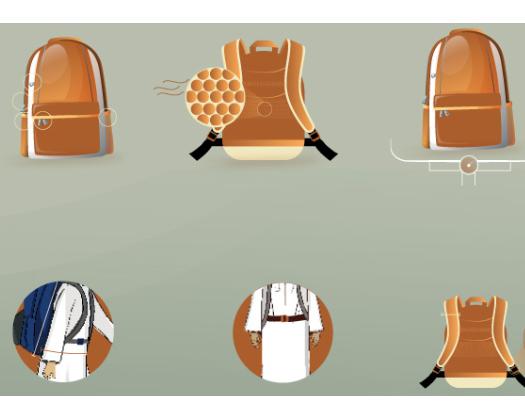Muscat: The Ministry of Education has undertaken significant efforts to foster the holistic development of Omani students across various educational stages, underpinned by robust foundations and principles that encompass spiritual, mental, physical, social, and health dimensions.
Continuing its commitment to safeguarding the health of students, the Ministry has brought to light the issue of excessively heavy school bags, particularly among students in grades 1 to 4.
Scientific research on this matter has revealed a range of health complications associated with the burden of carrying heavy bags, which can lead to back and spinal deformities, backbone sprains, gait abnormalities, and an increased risk of falls or injuries. Furthermore, these issues can extend to psychological distress and a diminished enthusiasm for academic pursuits, potentially affecting students throughout their lives.
The material composition of school bags is identified as a primary factor contributing to this problem.
Observations from the local market have shown that there exists a variety of school bags constructed from materials that are not only heavy but also uncomfortable, failing to meet health standards. This can significantly increase the load on students, especially when loaded with textbooks and other educational materials.
In response to these concerns, the authorities dedicated to student health have established criteria for a safe school bag. Such a bag must be made from comfortable and safe materials, be lightweight when empty, and its weight should not exceed 10% of the student's weight when loaded with educational materials.
Additionally, the bag should feature wide shoulder straps made of soft material to prevent shoulder pressure, adjustable straps to accommodate various student sizes, multiple compartments to distribute weight evenly, coverage from the upper back to the end of the ribs to avoid excessive pressure on the back, shoulder, and muscle areas, and a width that does not exceed the student's back.
To alleviate the burden of heavy school bags for students in grades 1 to 4, the Ministry has implemented practical measures aimed at addressing common practices related to the number of notebooks required in these grades.
This initiative includes issuing a circular that specifies the use of only two notebooks of the (80)-sheet type, one for the first field subjects and another for the second field subjects. It has also banned the use of booklets or external binders, encouraging students to adhere to the books provided by the Ministry.
The Ministry has also allocated lockers for students to store their textbooks, thereby facilitating coordination among subject teachers concerning homework assignments. Additionally, it encourages students and their parents to utilize the electronic books available on the educational portal website, while also highlighting the importance of follow-up by specialists across various educational directorates within the governorates.
To ensure the well-being of students, it is imperative that efforts are synergized between parents and the educational bodies within schools, as well as the educational directorates at the governorate level.
Parents play a crucial role in selecting the appropriate school bag for their children and monitoring the adherence to the school schedule. This ensures that students are not overwhelmed by the burden of carrying all their books and tools. Furthermore, it is essential for parents to communicate with the school administration should any issues arise concerning the school bag.
The school administration is tasked with overseeing this issue by engaging parents' councils to conduct awareness programs for both parents and students. It should also implement administrative procedures that enhance students' understanding of the school schedule, establish homework schedules, provide lockers for specific purposes, and maintain communication with parents to address any challenges related to the use of an ideal and safe school bag.
A primary focus should be placed on educating students on the correct methods and strategies for managing a school bag with suitable specifications to minimize its weight. This includes organizing and arranging the contents of the bag in accordance with the school schedule, arranging textbooks in a manner that places the heaviest at the back and the lightest at the front, distributing items across all bag pockets to evenly distribute weight.
Students are advised to carry the bag correctly, distributing the weight evenly across both shoulders and adjusting the straps so that the bag hangs at the waistline without extending over the pelvis.
It is recommended that students place the lunch bag separately from the school bag.
The Ministry of Education underscores the importance of collaboration on this issue, recognizing its significant impact on the health and well-being of students.













